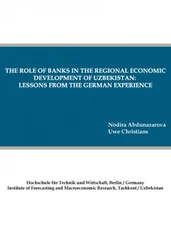Absolute saving of nonproduction labour would reduce human development, lead to social economic regress. Such saving is irregular for the nonproduction sphere. Extended reproduction of free time of the society, as an expression of the law of working time saving, is regular.
With progress of material production not only productivity grows, but social needs grow, population increases. As a result, saving of labour depends on how growing social needs for material benefits can be satisfied at the expense of increasing in productivity and, accordingly, how the general working time fund has to be increased if growth of consumption is not fully ensured by increasing in productivity.
Historically, relative scales of free time of the society, measured by the rate of free time of the society, have not been remaining unchanged because of increasing in social labour productivity.
In the period of machine industry growth of labour productivity was restrained by the fact that means of labour were set in motion by a worker who operated instruments of labour immediately. Scales of saved labour depended directly on scales of spent productive labour. That was why despite progress of labour productivity the rate of free time of the society remained less than 1.
In conditions of large-scale machine industry increasing in social labour productivity was released from such restrictions and accelerated, so that growth of the social product began many times outpacing increasing in the society working time fund. As a result, growth of free time of the society began outpacing increasing in the working time fund. The regular result of outpacing growth of free time is the situation when time of nonproduction social activities, by the absolute value, prevails over the working time fund in social production. It happened in all industrialized countries.
Growth of the rate of free time of the society, meaning an increase in social welfare, makes an objective prerequisite of economic development. Realization of this prerequisite is determined by the measure the combination of working and free time in social activities of each member of the society is ensured.
Economic Development as Overcoming of Essential Inequality in Distribution of Working and Free Time of the Society
Components of the rate of free time of the society are formed as total time of corresponding kinds of activities of all its members. However, it does not follow that the correlation of free and working time of each individual – the individual rate of free time – coincides with the social rate of free time.
Differences in their values can be connected to ages, for example. Children are not objectively able to fulfil productive labour at the same volume as adults can. Elderly people lose their ability to work too. Existence of such differences is not denied by the fact that “throughout the majority of human history, for example, the elderly were expected to engage in productive activities” [16]and at a family farm “all members of the household (including children) would engage in productive activity” [17]. One should not identify a duty or necessity to work with an equality of volumes of fulfilled labour.
There are age particularities in distribution of nonworking time between free time and time of satisfaction of physical needs. In particular, with a loss of health of elderly people duration and a part of the second component increase.
Such disagreements of individual rates of free time cannot be eliminated and are peculiar to all historical economic epochs. Not social reasons, but sex-age differences lie in the basis of these disagreements. In consequence of domination of social origins in people the noted before divergences of individual rates of free time are not essential from the social economic point of view and, as a whole, are matched with equality of appropriation of conditions for development.
Inessential differences in individual rates of free time were typical for members of primitive communal collectives what indicated social economic equality in appropriation of living conditions along with equal distribution of consumer goods. Such equality allowed the mankind to survive under historically inevitable elementary underdeveloped productive forces during many thousands of years.
This equality did not mean a high level of economic development because equality of all members of a commune did not ensure their actual development over limited content of labour functions and nonproduction activities. Formation of objective conditions for development demanded social division of labour meaning social economic fixation of big groups of people in economically heterogeneous kinds of activities. Accordingly, in class societies deviations of individual rates from the rate of free time of the society are crucially conditioned on different states of big social groups in the system of social production.
Unequal distribution of working and free time between opposite classes made a condition of productive force development under predominance of manual work. By virtue of the insufficiently high level of social labour productivity there was a need for fixation of production labour in the majority of members of the society and monopolization of free time by the minority of the society, so that representatives of this minority could have a material opportunity to be occupied with mental work, forming basis of sciences, education, and arts. The statement is true: “So long as the total social labour only yields a produce which but slightly exceeds that barely necessary for the existence of all; so long, therefore, as labour engages all or almost all the time of the great majority of the members of society — so long, of necessity, this society is divided into classes. Side by side with the great majority, exclusively bond slaves to labour, arises a class freed from directly productive labour, which looks after the general affairs of society: the direction of labour, state business, law, science, art, etc. It is, therefore, the law of division of labour that lies at the basis of the division into classes” [18].
In conditions of predominance of manual work an increase in scales of free time of the society supposed an increase in its working time fund because the proportion between spent and saved labour remained fixed or changed in favor of the latter with insignificant tempos. Consequently, at the pre-industrial epoch an objective possibility of social economic equality expressed in close values of individual rates of free time was missing.
For example, in slave-owning society the main mass of slaves was socially and economically fixed in productive labour that was in the form of manual work. Such labour absorbed almost all time of slaves’ life, less minimized time for satisfaction of physical needs. Typical day’s rate of free time of a slave went to zero.
On the contrary, slaveholders were divided from productive labour, all time of their social activities was related to free time of the society. Their individual time rate cannot be calculated because the denominator of this index is zero.
The services sphere of that period headed for needs of the privileged minority.
Without taking into account such distribution of free and working time between slaves and slaveholders, the notion about possibilities for development of members of the slave-owning society would be not full. For example, daily food ration of a slave, considering the calorie content, was equal to food ration of a Roman legionary what was objectively necessary for fulfilment of hard manual labour.
Under slavery economic development was connected to the tendency for overcoming full alienation of slaves from free time. Some slaves were allowed to start a family what supposed a certain possibility to dispose of their time.
Читать дальше












